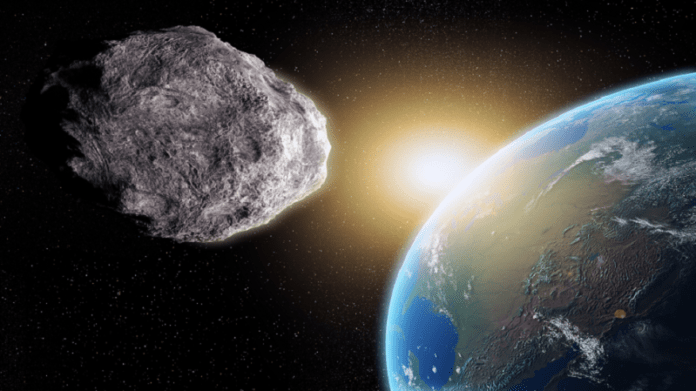According to reports circulating based on forecasts issued by NASA, a “missing” asteroid will hit the Earth this year and eliminate human life there.
The space rock, called 2007 FT3, was observed for just over a day 16 years ago, before it became very faint and disappeared.
The asteroid was officially called the “Lost Asteroid,” and it was observed long enough for scientists to be able to determine its orbit and any possible points at which it could strike our planet.
NASA’s Center for Near-Earth Object Studies has identified about 89 potential impacts, starting from October 3, 2024, to October 4, 2119.
Fortunately for those with plans later this year, the chance of 2007 FT3 colliding with us is about 1 in 11.5 million.
A NASA spokesperson told the Standard: “There are no known threats of asteroid impacts on Earth at any time in the next century. “NASA and its partners diligently monitor the skies to find, track and classify asteroids and near-Earth objects NEOs, including those that may come close to Earth.”
He continued: “Planetary scientists define the approach of asteroids that come within 30 million miles about 45 million km of Earth’s orbit as close approaches. The larger the asteroid, the easier it is for planetary defense experts to find, which means that its orbits around the Sun are usually well known and understood for years or even decades.
Although the asteroid’s weight of 54 million tons and its estimated height of 1,030 feet 314 meters make it look scary, it is small by cosmic standards.
Experts believe that the asteroid that wiped out the dinosaurs 66 million years ago was about 12 km wide, weighed nearly a trillion tons, and collided at a speed of about 45,000 miles per hour about 72,000 km/h. The power of the explosion reached about 10 billion atomic bombs.
It is believed to have struck land 24 miles 38 km off the port of Mexico’s Yucatán Peninsula. The resulting crater is more than 115 miles 185 km wide and 20 miles 32 km deep, half of which is underwater and the rest covered by rainforest.
This space rock played an important role in the extinction of the Cretaceous and Paleogene era, which eliminated nearly three-quarters of plant and animal species, including the largest land animals ever. Some were burned alive or drowned, but most starved to death.
The asteroid had global consequences, spewing huge amounts of dust, sulfur and carbon dioxide into the atmosphere. The dust and sulfur formed a cloud that reflected sunlight and greatly reduced the Earth’s temperature.

















